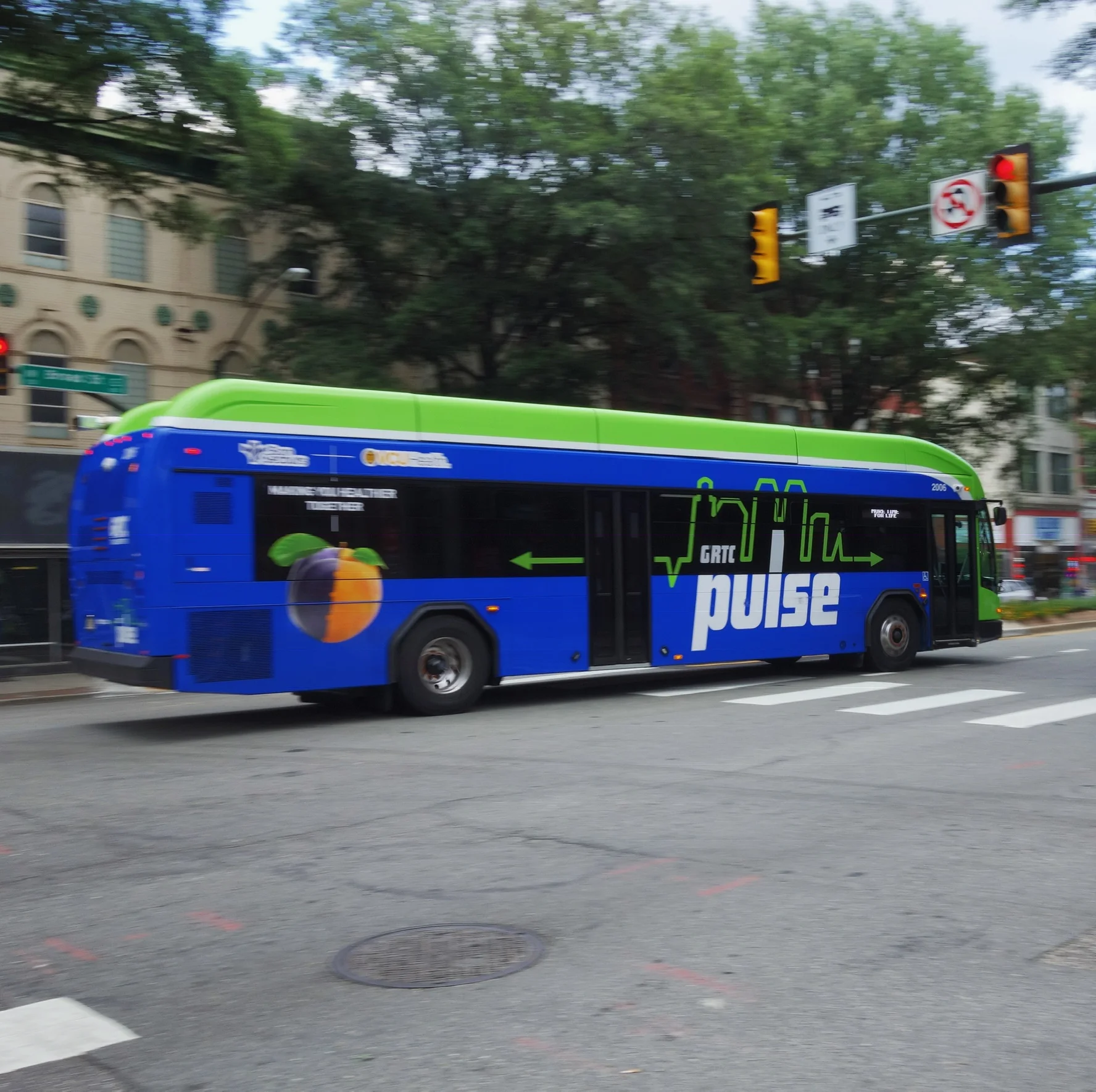Three takeaways from the first three weeks of Pulse service
Goal: 100 new supporters
TAKE ACTION
Fellow transit supporters! As we move past the opening of the Pulse and the entirely redesigned bus network, RVA Rapid Transit will continue our work of advocating, educating, and organizing for frequent and far-reach public transportation in the Richmond region. If you’d like to support us in that work, now is the time! What’s next? Well, here are just a few of the things we’ll be pushing for over the next couple of months:
- In Chesterfield County: Adding bus service from the city limits to John Tyler Community College along Route 1
- In Henrico County: Improving bus service to the Staples Mill Train Station, the airport, and adding bus service to Virginia Center Commons and Mechanicsville
- In Richmond City: Extending operating hours and adding bus stop amenities like benches, shelters, and trash cans to highly-used bus stops
There’s lots to do, and we need your help.
Before the end of July, we want to find 100 new supporters at any level—$5, $10, $100, whatever works for you. We’re almost there, but need a few more folks to get us over that goal. So if you’d like to partner with us on the work to bring frequent and far-reaching public transportation to the entire Richmond region, consider supporting us now.
AROUND THE REGION
GRTC’s Kelsey Calder is now a nationally certified Travel Training Instructor. This is big news, and Calder is an excellent resource for helping folks of all ability levels learn how to ride the bus through GRTC’s Travel Training Program. This program makes a ton of sense as it moves folks off of the on-demand CARE service, which is extremely limited (and expensive to run), and on to fixed-route service, which gives folks a ton more freedom to get around the region.
GRTC has also posted a time-lapse video of the construction of the Allison Street East Pulse station. If you’ve ever wondered what 17 months on Broad Street condensed down to 10 minutes looks like, here’s your answer.
ELSEWHERE
High-quality transportation investment spurs development—called Transit Oriented Development—but how do we make sure that development is equitable and doesn’t cause displacement? In King County, Washington, through new laws passed this year, the jurisdiction will donate land near rail stations for affordable housing to help address the region’s housing crisis.
Dallas now has 14 all-electric buses running a 19-mile loop. Electric buses are definitely the future, but, at the moment, they’re more expensive to buy and maintain than the compressed natural gas buses used by GRTC.
If you'd like to support RVA Rapid Transit's work to bring a truly regional transit system to Richmond, consider making a tax-deductible donation.
—Ross Catrow
This week in transit: 56,952!
TAKE ACTION
Here’s a quick reminder to sign up for the Pulse Pedal Pursuit, an all-day, all-modes-of-transportation scavenger hunt across the Pulse Corridor. Walk, bike, or bus your way to glory on July 21st!
AROUND THE REGION
The final Free Ride Week ridership numbers for the Pulse are in and folks took 56,952 trips, which GRTC CEO David Green says is 2.5x their goal. Whoa, that’s great! I’m still looking forward to seeing the numbers from the first non-free week (keeping in mind the mid-week federal holiday) and the overall ridership numbers for the entire system since the launch of the redesign.
D.C. might be getting in on the bus network redesign game, too, and has kicked off a study to see whether or not their future holds a “ground-up redesign”—including a rejiggering of how the system is owned and organized. Speaking of redesigns of major transportation systems, here’s Jarrett Walker on what it would take to redo the entirety of New York’s bus network.
Unlike Richmond, Northern Virginia has a regional transportation authority (the Northern Virginia Transportation Authority) that distributes funding for regional transportation projects. A lot of these projects are road-based, too many, really, but some of them are public transportation projects like the bus rapid transit planned for Richmond Highway. If and when the Richmond region gets around to putting together regional funding for transportation, we should think hard about how much of that funding ends up widening roads and constructing interchanges and how much of it goes to building a truly regional public transportation system.
ELSEWHERE
StreetsBlog has a good piece about the performance of microtransit programs throughout the country. These on-demand, low-volume services consistently serve fewer passengers at more cost than a regular ol’ bus. If you’ve got a major corridor that lacks public transportation—Jefferson Davis Highway in Chesterfield County and Route 360 out to Mechanicsville come to mind—microtransit will most likely not be the most efficient or cost effective solution to move folks around!
If you'd like to support RVA Rapid Transit's work to bring a truly regional transit system to Richmond, consider making a tax-deductible donation.
—Ross Catrow

